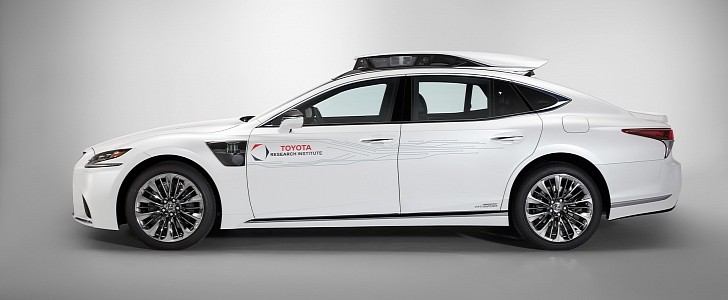Tesla’s choice to strip radar and lidar sensors from its cars has been highly criticized. The vision-based approach to self-driving development was deemed less safe by other companies, despite Elon Musk arguing that humans only need eyes to drive a car. But now, Woven Planet, a Toyota subsidiary, has announced a similar strategy in pursuit of fully autonomous driving.
The move is no doubt surprising since Toyota is considered one of the most conservative companies in the automotive industry. Woven Planet thinks that switching to cheap cameras to collect data and train its neural network system could help drive down the costs and accelerate the company’s self-driving efforts. This is pretty much the same thing that Tesla is scoffed at.
Neural networks need insane amounts of data to learn new tricks and feeding the system is much more efficient when you have many cheaper data-collecting sensors. Cameras have proved efficient and reliable in this regard, and Tesla recently started moving all the vehicles in its lineup to Tesla Vision, its proprietary vision-based sensor array. This has certainly caught Woven Planet’s attention, since using cheaper sensors would improve the stream of data fed into the system.
“We need a lot of data. And it’s not sufficient to just have a small amount of data that can be collected from a small fleet of very expensive autonomous vehicles,” Michael Benisch, VP of Engineering at Woven Planet, said in an interview with Reuters. “Rather, we’re trying to demonstrate that we can unlock the advantage that Toyota and a large automaker would have, which is access to a huge corpus of data, but with a much lower fidelity.”
Benisch is a former engineering director at Lyft’s self-driving division, which Toyota acquired last year. His ideas have prompted Woven Planet to use cameras that are 90% cheaper than sensors that it used before and can be easily installed in fleets of passenger cars. Unlike Tesla, though, the lower fidelity approach will not be used for commercial applications, but only for data gathering during the development phase.
As such, Toyota will still use multiple sensors such as lidars and radars for robotaxis and other autonomous vehicles to be deployed on the road. This is considered the safest approach at this time, although Woven Planet believes a camera-only approach would be possible “in many, many years.” This is where Toyota’s and Tesla’s points of view differ.
Neural networks need insane amounts of data to learn new tricks and feeding the system is much more efficient when you have many cheaper data-collecting sensors. Cameras have proved efficient and reliable in this regard, and Tesla recently started moving all the vehicles in its lineup to Tesla Vision, its proprietary vision-based sensor array. This has certainly caught Woven Planet’s attention, since using cheaper sensors would improve the stream of data fed into the system.
“We need a lot of data. And it’s not sufficient to just have a small amount of data that can be collected from a small fleet of very expensive autonomous vehicles,” Michael Benisch, VP of Engineering at Woven Planet, said in an interview with Reuters. “Rather, we’re trying to demonstrate that we can unlock the advantage that Toyota and a large automaker would have, which is access to a huge corpus of data, but with a much lower fidelity.”
Benisch is a former engineering director at Lyft’s self-driving division, which Toyota acquired last year. His ideas have prompted Woven Planet to use cameras that are 90% cheaper than sensors that it used before and can be easily installed in fleets of passenger cars. Unlike Tesla, though, the lower fidelity approach will not be used for commercial applications, but only for data gathering during the development phase.
As such, Toyota will still use multiple sensors such as lidars and radars for robotaxis and other autonomous vehicles to be deployed on the road. This is considered the safest approach at this time, although Woven Planet believes a camera-only approach would be possible “in many, many years.” This is where Toyota’s and Tesla’s points of view differ.






